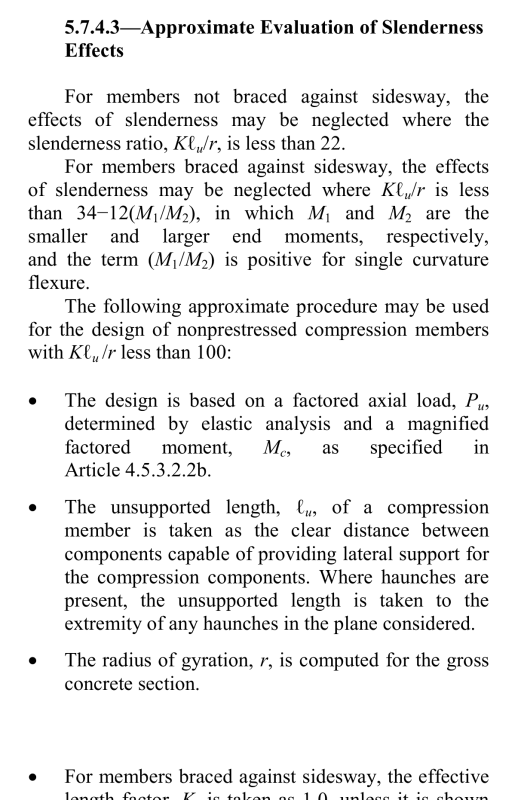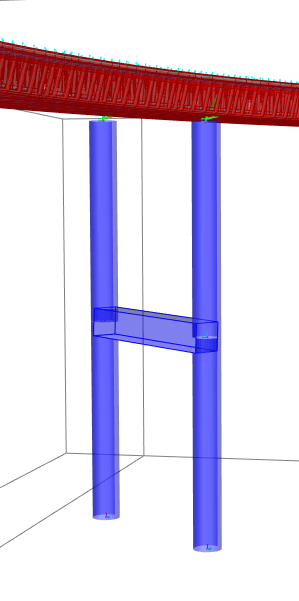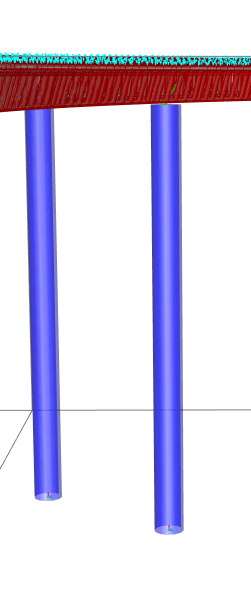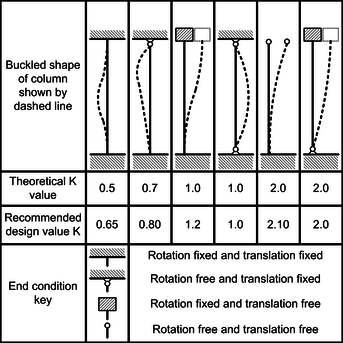Hassaan_16
Structural
Hi! A complete novice here. I'm designing a bridge pier (L=26m, D=1.8m, laterally braced at mid-height. Using CSI Bridge). I was analyzing the design data when I saw that the value of Delta_b (Moment magnification factor for non-sway moments) was 2.093. I know that the ACI 318 limits the non-sway moment magnification factor to not more than 1.4 but the software didn't generate a warning message when designing using the AASHTO LRFD 2014 code. So, I designed the pier again using ACI 318-19, and as I expected, the software generated a warning message saying that the Delta_ns (Delta_b in the case of AASHTO LRFD) exceeded the maximum value of 1.4 (Delta_ns=1.489) and declared the member as "Over stressed" (O/S). Please guide as to what should be done in this case when one code is passing the pier section while the other declares it as over-stressed. TIA..




